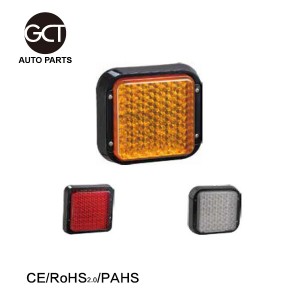Overview
The automotive industry continues to face pressures from increasing competition, the need for technological innovation, well-informed customers, and strict environmental and safety standards. The Netherlands ranks ninth as a near-term, export destination for U.S. automotive aftermarket parts and eleventh as an export destination for U.S. automotive original equipment, according to the International Trade Administration’s 2016 Automotive Parts Top Market Report. Ample opportunities exist for U.S. suppliers to provide competitive prices and innovative products.
Unit: USD thousands
| 2015 | 2016 | 2017 (estimated) |
2018 (estimated) |
|
| Total Local Production | 29,322 | 33,736 | 33,101 | 33,854 |
| Total Exports | 17,204,870 | 19,339,908 | 20,065,628 | 20,169,117 |
| Total Imports | 22,023,855 | 22,999,639 | 21,759,013 | 21,983,188 |
| Imports from the U.S. | 692,537 | 807,335 | 960,997 | 984,275 |
| Total Market Size | 4,848,306 | 3,693,466 | 1,407,646 | 1,847,925 |
| Exchange Rate (1 USD in Euro) |
0.90131 | 0.9034 | 0.9409 | N/A |
(total market size = (total local production + imports) – exports)
Data Sources:
Total Local Production: Statistics are unofficial estimates
Total Exports: Dutch Central Bureau for Statistics (SITC 78)
Total Imports: Dutch Central Bureau for Statistics (SITC 78)
Imports from U.S.: Dutch Central Bureau for Statistics (SITC 78)
Sub-Sector Best Prospects
Customizing cars remains a trend. Volkswagen, Peugeot, Opel, Audi, and Seat are the most commonly customized cars in the Netherlands. Common customizations are chip tuning, adjusting turbo and exhaust systems, body wrapping, spray paints, and wheel adjustments.
Driver assistance is an expanding market, with an expected increase in the use of adaptive cruise control (ACC), remote control parking, forward/reverse collision warning with autonomous brakes, lane departure warning, and blind-spot monitoring. Other technologies in high demand include 360 degree cameras, keyless-go-systems, and automatic transmissions. Due to the increase in electric mobility (vehicles), there has been a strong increase in electric charging points, from about 6,000 in 2013 to more than 26,000 in 2016.
Opportunities
The Dutch interest in electric mobility continues to grow across a range of vehicles, including passenger cars, trucks, busses, special vehicles, and motorbikes. In 2016, the number of registered electric cars in the Netherlands increased by 40 percent over 2015. Although demand for electric mobility has increased, the rate of increase has slowed slightly, due to a change in fiscal regulations by the Government. As of January 2016, the lower additional tax rate of 4 percent only applies to electric cars. Other ecofriendly cars, including hybrids, no longer profit from similar regulations and have an additional tax rate of 7 percent.
Companies can benefit from government support and are encouraged to select environmental friendly techniques and equipment through the Environment-Investment Deduction (MIA), which has a €95 million budget and the Random Write-off Environment Investment (VAMIL) with a €40 million budget for 2017. U.S. suppliers with products and services that advance green mobility are recommended to partner with a Dutch company.
Web Resources
Market analyses:
Global Automotive Resource Guide 2017
2016 Top Markets Report – Automotive Parts
Netherlands – Automotive Parts and Service Equipment/Accessories Related Video:
We are going to make every single effort for being excellent and excellent, and accelerate our ways for standing while in the rank of international top-grade and high-tech enterprises for , , , we are sincerely hope to establish one good long term business relationship with your esteemed company thought this opportunity, based on equal, mutual beneficial and win win business from now till the future.

